If you’re looking to bring bold color, sculptural beauty, and classic elegance to your garden, few flowers rival the grace of the iris. With their distinctive, intricate blooms and wide range of colors, irises thrive in various climates and garden styles — from formal borders to wildflower meadows and water gardens. With hundreds of species to choose from, here are 10 beautiful iris varieties that will add a truly unique and eye-catching touch to your landscape.
1. Bearded Iris (Iris germanica)

The most popular and widely grown iris, Bearded Irises are prized for their large, ruffled flowers and distinctive “beards” — fuzzy, caterpillar-like structures on the falls (lower petals). Blooming in late spring to early summer, these perennials come in almost every color imaginable, from rich purples and blues to vibrant yellows, pinks, and near-black. Bearded Irises grow 2 to 3 feet tall and thrive in full sun and well-drained soil. Plant them in clumps for striking displays and reliable, low-maintenance beauty.
2. Siberian Iris (Iris sibirica)
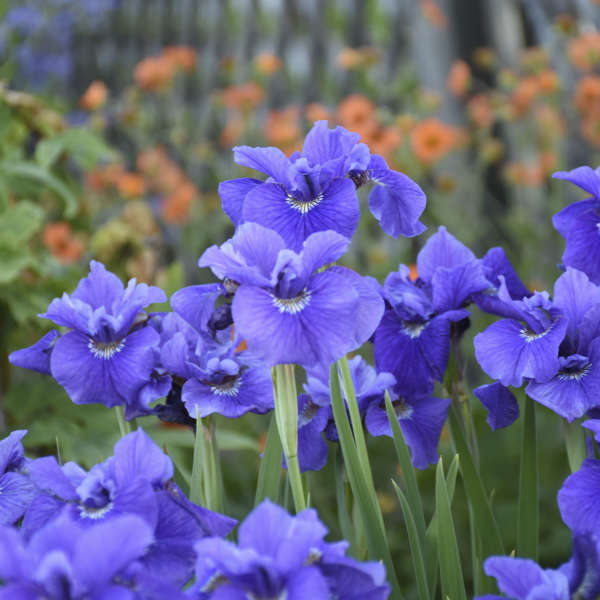
Elegant and graceful, Siberian Irises feature narrow, upright foliage and delicate, smaller flowers in shades of blue, purple, white, and yellow. Blooming in late spring to early summer, they grow 2 to 4 feet tall and perform well in moist, well-drained soil. Unlike bearded irises, they lack the fuzzy “beards” but offer a more natural, meadow-like look. Siberian Irises are perfect for borders, water features, and cottage-style gardens. They’re also disease-resistant and beloved by pollinators.
3. Japanese Iris (Iris ensata)
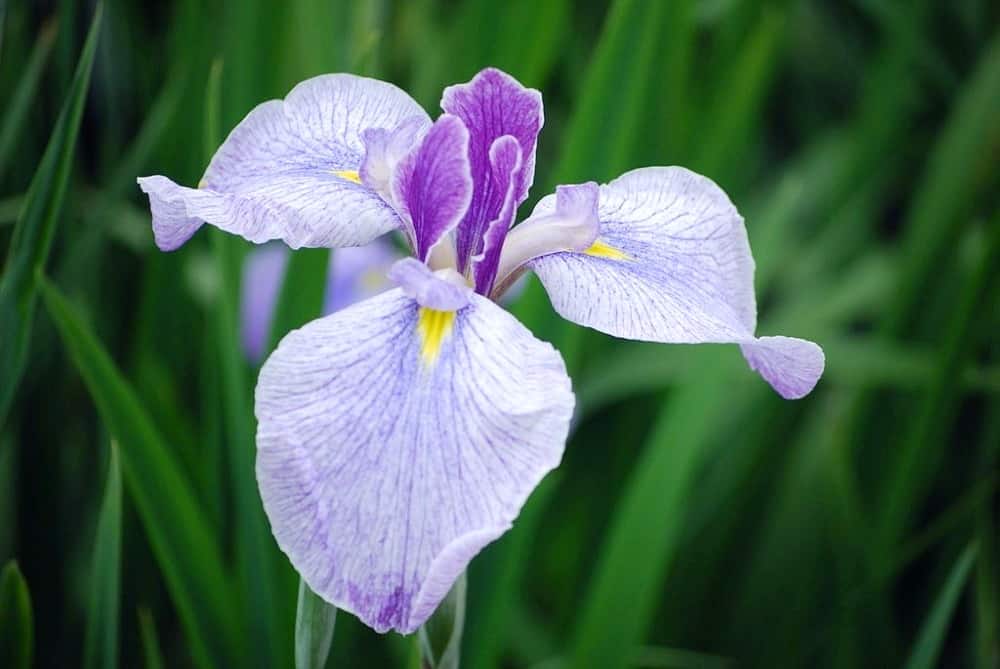
Japanese Irises are known for their flat, broad blooms with striking, intricate markings. These showy flowers appear in early to mid-summer in shades of purple, blue, pink, and white, often featuring delicate veining or contrasting signals. Growing 2 to 4 feet tall, they prefer rich, consistently moist soil and thrive around ponds or in rain gardens. Japanese Irises are ideal for adding an exotic, refined feel to classic landscapes and look stunning when planted in large drifts.
4. Dutch Iris (Iris × hollandica)

Dutch Irises are typically grown from bulbs and are well-loved for their slender stems and elegant blooms in spring. Their flowers often feature vivid purples, blues, and yellows, with distinctive upright standards and arching falls. Growing up to 24 inches tall, Dutch Irises are popular in cut flower arrangements and formal borders. They prefer full sun and well-drained soil and can naturalize in mild climates. Their crisp, clean form makes them ideal for contemporary garden designs.
5. Louisiana Iris (Iris hexagona)

Native to the wetlands of the southern U.S., Louisiana Irises produce large, vibrant blooms in a rainbow of colors — from deep reds and purples to brilliant yellows and whites. Blooming in late spring to early summer, these irises grow up to 4 feet tall and prefer moist to wet soils, making them perfect for bog gardens, pond margins, and rain gardens. Their bold, tropical-like flowers and vigorous growth habit add lush, colorful drama to water-wise landscapes.
6. Crested Iris (Iris cristata)

A charming, petite species, Crested Irises produce small, pale blue or violet blooms with a distinctive yellow or white crest on each fall petal. Blooming in mid to late spring, they grow only 6 to 8 inches tall, making them ideal for woodland gardens, shady borders, or as ground cover beneath trees. These hardy natives prefer part shade and moist, humus-rich soil. Crested Irises naturalize beautifully in dappled areas, adding an elegant, wild touch to shaded spots.
7. Spuria Iris (Iris spuria)
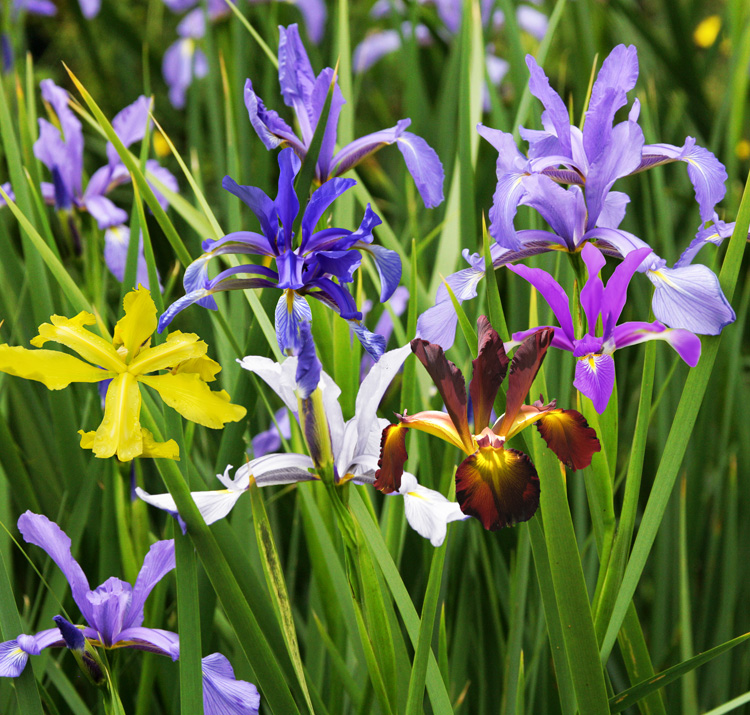
Resembling a cross between Dutch and Japanese Irises, Spuria Irises produce tall, slender stems topped with large, upright blooms in colors ranging from gold and bronze to purple and blue. Blooming in early summer, these drought-tolerant plants grow up to 5 feet tall and thrive in full sun and well-drained soil. Spuria Irises are perfect for perennial borders, naturalized meadows, and contemporary landscapes. Their stately height and delicate blooms add vertical interest and elegance.
8. Yellow Flag Iris (Iris pseudacorus)
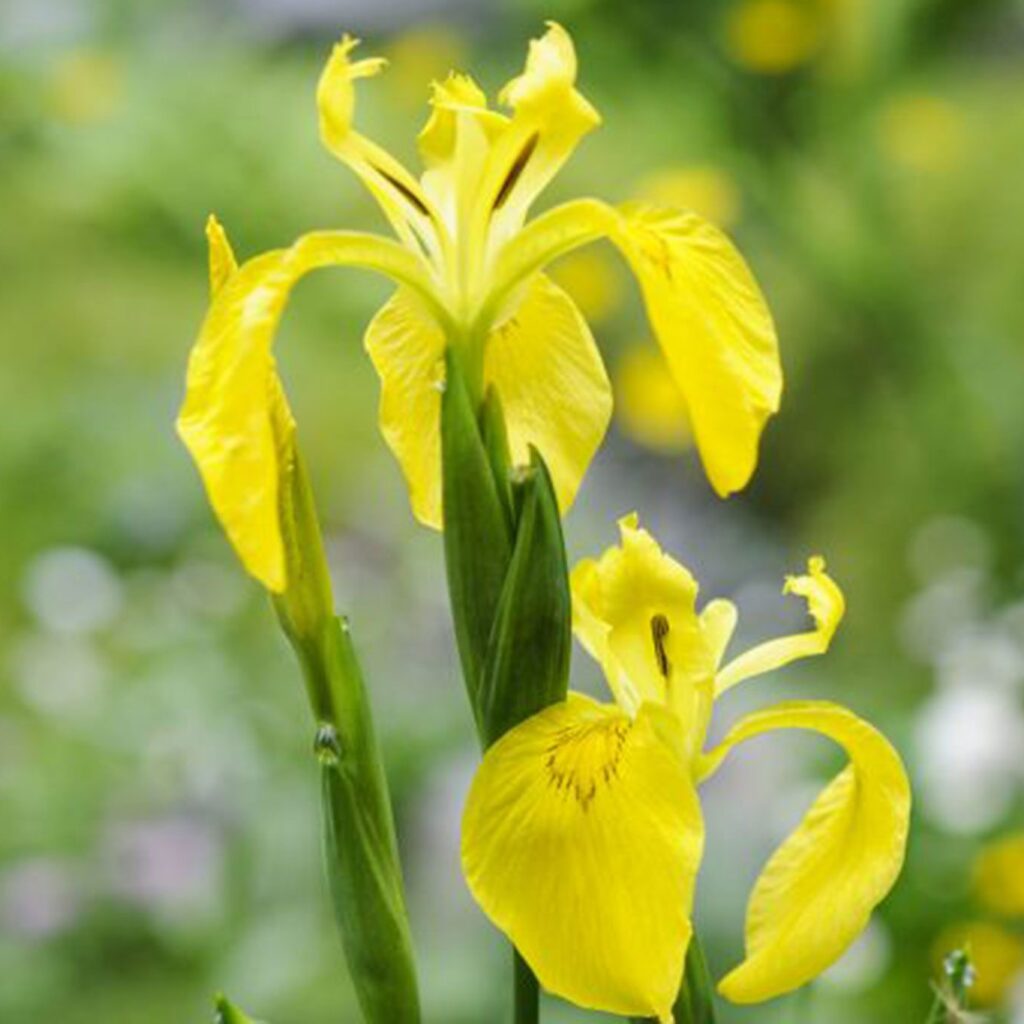
A striking species often found in wetlands and along pond edges, the Yellow Flag Iris showcases bright yellow flowers with graceful, arching petals. Blooming in late spring to early summer, it grows up to 4 feet tall and prefers moist to wet soils, thriving in boggy areas and shallow water. While beautiful, it can be invasive in some regions, so check local guidelines before planting. In controlled areas, it adds brilliant color and attracts bees and butterflies to water gardens.
9. Pacific Coast Iris (Iris douglasiana and hybrids)

Native to the western U.S., Pacific Coast Irises produce delicate, narrow-petaled blooms in a rich variety of colors, including purple, yellow, blue, and pink. Blooming in late spring, they grow up to 2 feet tall and prefer mild, coastal climates with well-drained, acidic soils. These irises are ideal for rock gardens, woodland edges, and naturalized areas. Their drought tolerance and graceful appearance make them a favorite among native plant enthusiasts and wildlife gardeners.
10. Reticulated Iris (Iris reticulata)
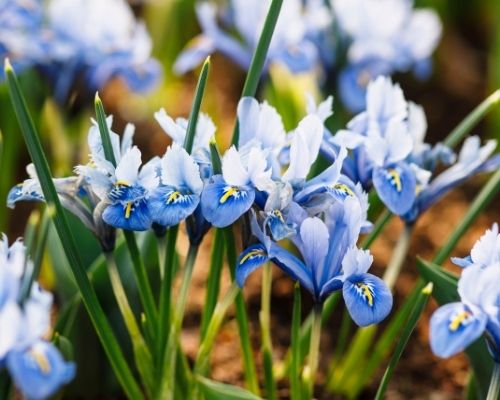
Among the earliest bloomers, Reticulated Irises pop up in late winter to early spring, often while snow still lingers. These small, bulbous irises grow only 4 to 6 inches tall and feature rich blue, violet, or purple flowers with intricate gold or white markings. Perfect for rock gardens, containers, and the front of borders, Reticulated Irises thrive in well-drained soil and full sun. Their compact form and vibrant color make them a delightful early-season surprise in the garden.
Final Thoughts
With their graceful lines, rich colors, and diverse forms, irises are a must-have for gardeners seeking plants that deliver both visual drama and lasting charm. From the bold blooms of Bearded Irises to the delicate elegance of Japanese and Siberian varieties, these 10 types of irises can transform your garden with texture, fragrance, and seasonal color.
Would you like me to design a seasonal iris garden plan or a water-friendly iris layout? I’d be happy to help with that too!



